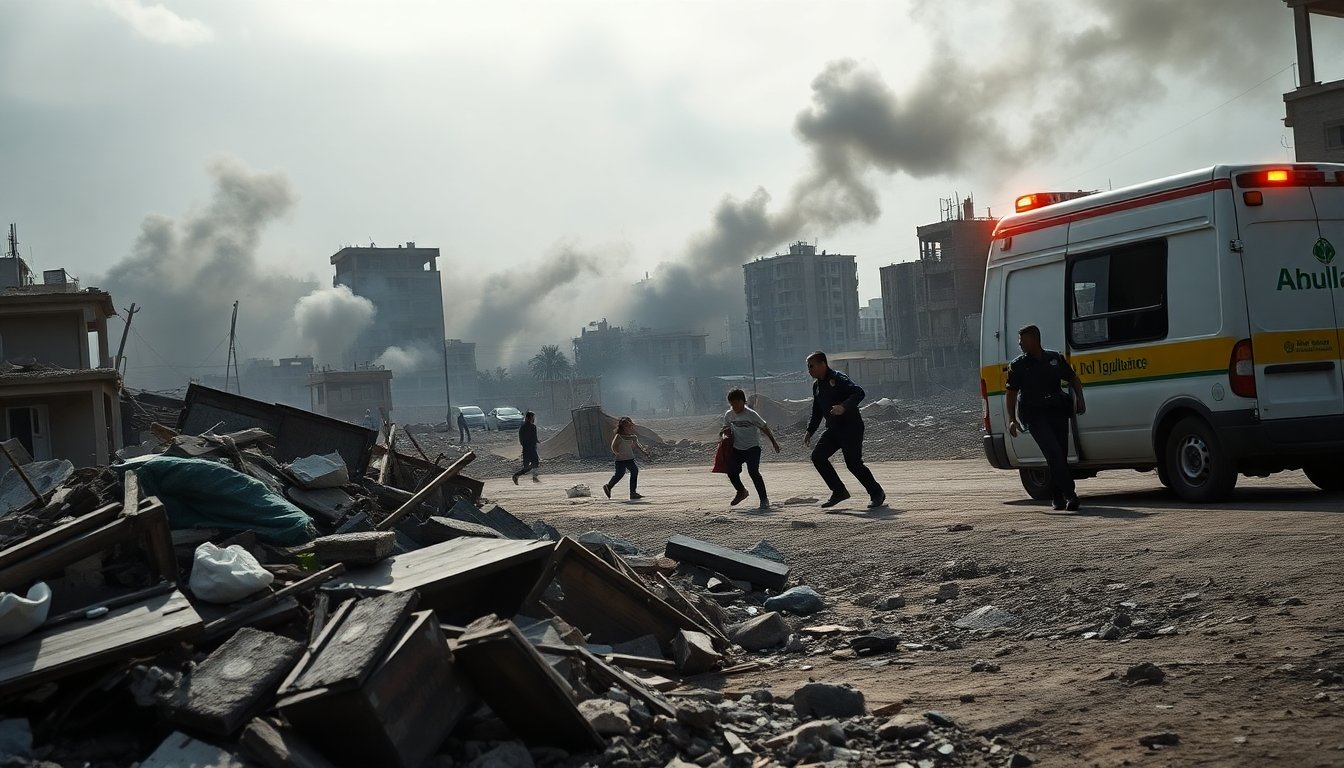Table of Contents
At least 25 Palestinians have died following a series of Israeli airstrikes on a Wednesday, as reported by the local Health Ministry. These attacks took place in Gaza areas controlled by Hamas since a fragile ceasefire was established in October.
The airstrikes resulted in significant casualties, with 10 fatalities reported in the Zeitoun neighborhood of Gaza City, and two more in the Shejaia area. Additional deaths occurred in separate incidents in Khan Younis, located in the southern Gaza Strip.
Violations of the ceasefire agreement
The Israeli military defended its actions, stating that the strikes targeted Hamas in response to fire directed at Israeli troops, which they characterized as a violation of the ongoing ceasefire that has lasted nearly six weeks. Israeli forces reported no injuries among their personnel during this escalation.
In response to the airstrikes, Hamas condemned the actions as a dangerous escalation, urging the United States to pressure Israel into adhering to the ceasefire terms. A U.S. official, speaking anonymously, indicated that Hamas was attempting to provoke a ceasefire breakdown while not fulfilling its commitment to demilitarize.
Impact on civilian life
The conditions for civilians have deteriorated significantly. Kifah Mahmoud, a 58-year-old resident, shared her experience as she sought shelter in a tent with her grandchildren. She described a scene of chaos: “Everyone was screaming… people were in pieces. Paramedics couldn’t determine what to carry.” Her family had been praying for safety, yet the sudden violence left them traumatized.
The fragility of the ceasefire is evident amid the ongoing violence. Since the truce began, Palestinian health authorities report that Israeli airstrikes have killed 305 individuals in Gaza, with many fatalities occurring in a single day of retaliatory attacks. In comparison, Israel has reported the loss of three soldiers since the ceasefire started.
Challenges ahead: Aid and infrastructure struggles
As winter approaches, the humanitarian situation in Gaza remains dire. The flow of aid to the region continues to fall short of the population’s needs. While the ceasefire has allowed some families to return to their damaged homes, uncertainty and fear persist.
Although Israel has resumed limited water and electricity supplies following a partial easing of the utilities blockade, the damage to Gaza’s water and sanitation infrastructure is extensive. Much of it was destroyed in previous conflicts. The Abdul Salam Yassin Company, responsible for providing water desalination to a significant portion of the population, recently resumed operations after a detained staff member was released by Hamas authorities. Still, the availability of fuel for generators is limited due to ongoing restrictions.
Historical context and the path forward
The historical context of Khan Younis adds complexity to the current situation. Once a vibrant center during the Mamluk Empire, the city has faced severe destruction in recent conflicts. Today, it stands as a stark reminder of the ongoing struggle and resilience of its residents.
The recent airstrikes highlight the precarious nature of the peace process, with both sides blaming each other for the ceasefire violations. As tensions continue to rise, the international community remains vigilant, hoping for a resolution that can lead to lasting peace in the region.


